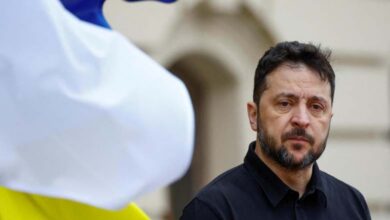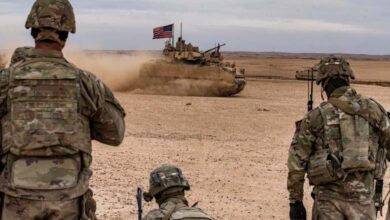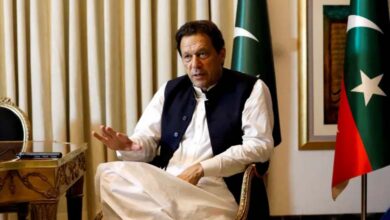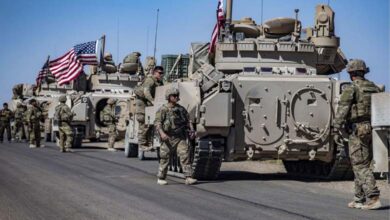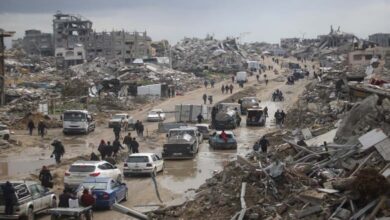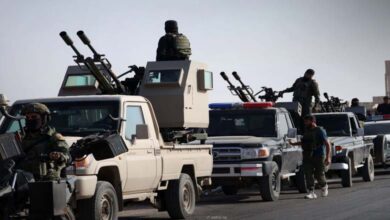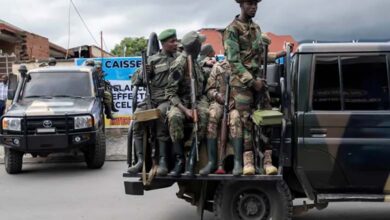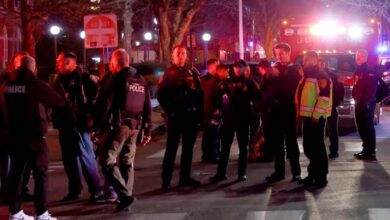Taliban Interior Minister Seraj Haqqani is on US wanted lists

Sirajuddin Haqqani, the interior minister in the new government, has become the most controversial member of the formation due to his presence on US wanted lists.
The young leader early jumped to the front lines of the Taliban leadership, thanks to the efforts of the Haqqani Network, founded by his father Djalalouddine Haqqani and in recent years has become the backbone of the movement’s fighting force in Afghanistan.
Despite being relatively young compared to the other top-tier leaders of the Taliban, Haqqani was able to rise quickly in the movement’s structure. He is an adviser to Haibatullah Akhundzada and runs a network of fighters that contributed to the overthrow of the government of Ashraf Ghani.
Over the past years, the network has been the striking force of the Taliban since it joined in 1995, against the US-led international coalition and the Afghan government, and its founder, Djalalouddine Haqqani, was the most prominent fighter against the Soviet invasion of Afghanistan.
Who is Sirajuddin Haqqani?
“Haqqani’s birth date is not known, but available information indicates that he was born between 1973 and 1980 in Afghanistan’s border areas with Pakistan.”
Sirajuddin was raised in the arms of his father, a fierce anti-government fighter in Afghanistan and Pakistan; He spent his childhood in Miramshah, North Waziristan.
The Pashtun, who also speaks Arabic, received his elementary education at Dar Al-Uloom School, which is part of his father’s network. From there he graduated to become a member of the Haqqani Group at an early age.
The Taliban rewarded Sirajuddin’s father with a position in the government, during its rule from 1996 to 2001. The disease crippled the network’s founder, and rumors of his death continued, starting the influence of the son, who became the network’s de facto leader.
Sirajuddin’s name was shined as the network was accused of operations in the Afghan capital of Kabul and of having close links with Oussama Ben Laden’s al-Qaeda terrorist network.
On terrorism lists
The alleged relationship of the network with al-Qaeda led the United States to place the Haqqani network on its sanctions list, and millions of dollars were set aside for information leading to the arrest of Sirajuddin on charges of committing terrorist operations.
The FBI’s website still has the details of Sirajuddin Haqqani’s description and operations: the death of six people, including an American citizen, in a Kabul hotel attack in 2008, and the attempted assassination of former Afghan President Hamid Karzai that same year.
“In 2013, the Afghan government thwarted a Haqqani operation after stopping a truck carrying tons of explosives, while another truck bomb killed 150 people in Kabul in 2017, but Sirajuddin denied committing the terrorist operation.”
The Haqqani network’s ties with the Taliban have taken root and gained weight in eastern Afghanistan, with Sirajuddin appointed as deputy leader of the movement in 2015.
In 2018, the Taliban announced the death of Djalalouddine Haqqani. Sirajuddin officially took over as the network’s leader, after his father fell ill and became elderly.
Negotiation phase
“In recent years, Sirajuddin Haqqani has turned toward negotiating with the Afghan government and the United States, much as the Taliban leaders did after years of military confrontation with Washington and its allies, and with the Kabul government.”
Through negotiation, Sirajuddin succeeded in getting his brother, Anas Haqqani, out of a prison in Afghanistan’s Bagram Air Base in 2019, after five years of detention, in a swap deal that was the start of peace talks with the United States.
Haqqani himself published an article in the New York Times last year entitled “What does the Taliban want?”, in which he condemned the killing and maiming, praised the path of negotiation with the United States, and did not exclude an opportunity for peace.
In the middle of last month, after the Taliban took control of Kabul, Sirajuddin Haqqani was at the forefront of the movement’s leaders who arrived in the Afghan capital. He later emerged to lead consultations with Hamid Karzai and the head of the Afghan High Council for Reconciliation, Abdullah Abdullah.



